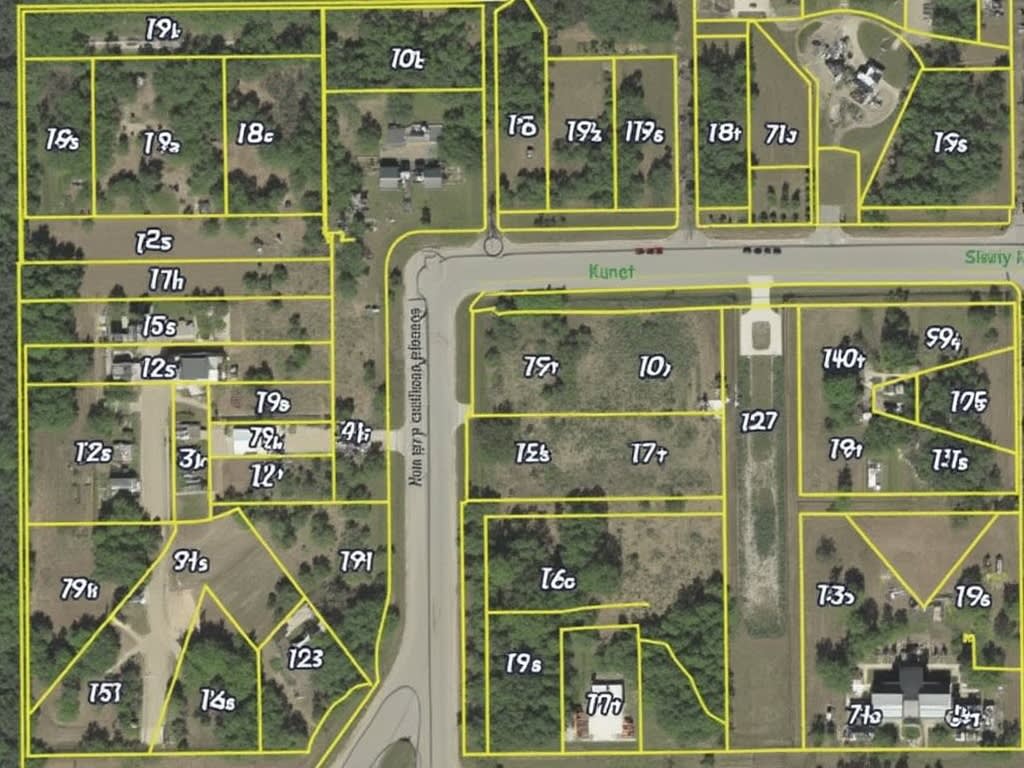At the heart of land sales to developers in New Braunfels lies strategic planning and market knowledge. Property prices have jumped 35% since 2020, with substantial variations tied to zoning and development options. I’ve found that residential-zoned lots sell for 3-4 times more than agricultural parcels. Properties with ready infrastructure access typically fetch 40-60% higher prices, making proper preparation vital for optimal returns.
Key Takeaways
- Professional assessments including land surveys by Registered Professional Land Surveyors (RPLS), thorough title searches, and environmental studies are must-haves before listing
- Legal compliance includes specific contract terms, Municipal Utility District (MUD) notices, and detailed environmental assessment parameters
- Strategic partnerships improve by working with skilled land development professionals and building connections with multiple developers
- Your property’s market value depends heavily on its zoning status, available infrastructure, and environmental conditions
- Successful sellers avoid basic mistakes such as using residential property comparisons and ignoring infrastructure development costs
Don’t Get Shortchanged: Understanding Your Land’s True Value in New Braunfels
Market Value Fundamentals
New Braunfels land prices have increased by 35% since 2020, making accurate valuation crucial. I’ve seen properties sell for significantly different prices based on their development potential and current zoning status. Agricultural land typically sells for $25,000-$35,000 per acre, while residential-zoned parcels can fetch $85,000-$150,000 per acre in prime locations.
Key Value Determinants
Your land’s worth depends on several critical factors. Here are the essential elements that impact your property’s market value:
- Zoning classification – residential parcels command 3-4 times higher prices than agricultural land
- Physical characteristics – elevation changes, tree coverage, and soil composition
- Infrastructure access – properties with existing utilities increase value by 40-60%
- Development potential – corner lots or main road frontage can add 25-30% to base value
- Environmental factors – flood plain designation can reduce value by up to 50%
Professional assessments are vital before listing your property. A Registered Professional Land Surveyor (RPLS) survey identifies exact boundaries and topography. Title searches reveal any restrictions or easements that could affect development plans. Soil studies determine construction suitability – properties with ideal soil conditions can command 20-30% premium over those requiring extensive site work.
A thorough understanding of these elements helps secure fair market value. I recommend getting multiple professional opinions and staying current with local market trends through the New Braunfels Board of Realtors quarterly reports.

Legal Requirements and Contract Pitfalls to Watch For
Essential Contract Elements and Requirements
Texas law demands specific notices for Municipal Utility District (MUD) sales under the Texas Water Code – I’ve seen many sellers miss this crucial requirement. Before signing any contract, a thorough environmental assessment and property survey need completion. The contract should clearly state these requirements and who bears responsibility for costs.
Here are the key elements your land sale contract must include:
- Due diligence periods with specific timelines and deadlines
- Financing contingencies with clear terms
- Environmental assessment specifications
- Updated property survey requirements
- MUD notice acknowledgments
- Dispute resolution procedures
Many contract disputes stem from unclear terms or incomplete documentation. I recommend working with a real estate attorney to review these elements. By addressing these components upfront, you’ll protect your interests and create a smoother transaction process.

Choosing and Working with Developers: Separating Fact from Fiction
Finding and Evaluating Qualified Developers
Commercial real estate agents serve as valuable connectors between landowners and reputable developers in New Braunfels. I recommend starting your search through established agents who understand local market dynamics and have proven track records of successful land deals.
Several key factors should guide your developer evaluation process:
- Financial stability: Request proof of funds and recent project completions
- Local market knowledge: Look for developers with existing New Braunfels projects
- Development timeline: Clear project schedules and milestone commitments
- Communication style: Regular updates and transparent decision-making
- References: Contact previous landowners they’ve worked with
Professional networks like LoopNet and CoStar can help identify active developers in the area, but personal relationships often lead to better outcomes. Recent successful developments in New Braunfels, such as the Solms Landing mixed-use project, demonstrate the potential of working with experienced developers who understand local regulations and market demands.
Different buyer types will present varying offers. While individual investors might offer quick closings, established developers typically provide more comprehensive deals with profit-sharing opportunities. Your choice should align with your financial goals and desired level of involvement in the development process.
Remember to maintain multiple developer relationships throughout the evaluation process. This creates healthy competition and increases your chances of securing favorable terms.

Essential Pre-Sale Preparations
Documentation and Assessment Steps
I recommend starting with an independent land appraisal to establish accurate market value. This step helps prevent undervaluing your property and strengthens your negotiating position with developers.
Here are the key preparation steps for a successful land sale:
- Clear title documentation: Gather deed records, tax statements, and any existing liens or encumbrances
- Professional land survey: Verify exact boundaries and square footage
- Zoning verification: Check current classifications and potential future changes through New Braunfels Planning Department
- Infrastructure assessment: Document existing utilities, road access, and planned municipal improvements
- Environmental reports: Obtain soil tests and flood plain status
The property’s value can shift based on New Braunfels’ development plans. I’ve found that sellers who research upcoming infrastructure projects often secure better deals. For example, a planned road expansion or new utility line can significantly boost land value.
Before listing, verify your ownership documentation through a title company. This prevents costly delays during the sale process. A thorough boundary verification through a licensed surveyor helps avoid disputes and establishes clear property lines.
Check with local planning authorities about potential zoning changes. Recent shifts in New Braunfels’ development codes have created opportunities in previously restricted areas. Understanding these changes positions you to market your land more effectively to developers.
Environmental and Survey Considerations
Required Environmental Assessments
Phase I environmental assessments serve as the starting point for land sales in New Braunfels. These tests check for potential contamination from previous property uses. I recommend getting a preliminary wetland determination and flood zone analysis before listing your property.
Environmental Challenges and Solutions
Environmental issues can reduce property value by 10-30%, but several fixes exist:
- Soil remediation through professional decontamination services
- Flood zone elevation certificates to identify buildable areas
- Wetland delineation studies to mark protected zones
- Tree surveys to document heritage oaks and protected species
Accurate boundary surveys remain crucial – even small discrepancies can derail developer deals. I suggest hiring a Texas Registered Professional Land Surveyor to conduct a new ALTA survey if your existing one is over 5 years old. This modern survey data helps buyers assess development potential while avoiding costly surprises during due diligence.
Critical Mistakes That Can Cost You Money
Financial Impact of Poor Planning
I’ve seen landowners lose significant value by rushing into developer negotiations without proper preparation. Setting incorrect pricing can immediately reduce your profit potential. Too high, and developers won’t look twice. Too low, and you’re leaving money on the table.
Here are the key pricing mistakes to avoid:
- Relying on residential comps instead of developer-specific land valuations
- Failing to account for future zoning potential
- Overlooking infrastructure costs developers will factor into their offers
- Not considering current market absorption rates
- Missing opportunities for phased purchase agreements
Clear communication serves as your strongest asset during negotiations. Many sellers make the error of limiting payment structure discussions to all-cash deals. Instead, stay open to creative financing options like joint ventures or phased closings – these can often lead to higher total returns.
Professional representation plays a crucial role in maximizing your sale price. Land sales agents with developer relationships understand current market demands and can properly position your property. I recommend working with agents who have closed at least five developer transactions in your specific market.
Effective property presentation makes a major difference. Many sellers skip professional surveys, conceptual plans, and detailed property information packages. These materials help developers visualize potential and can lead to stronger offers.

